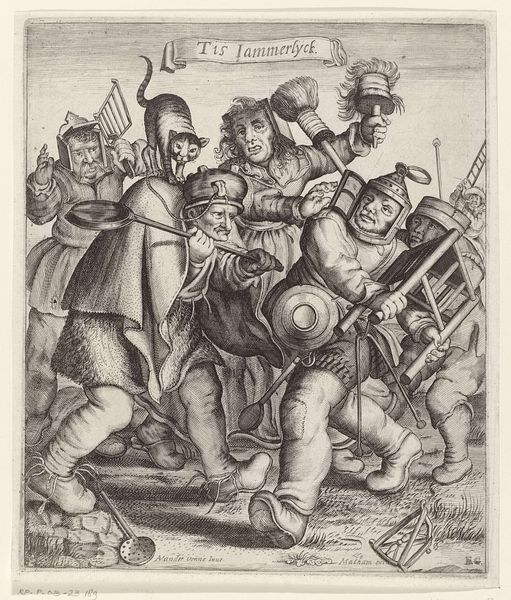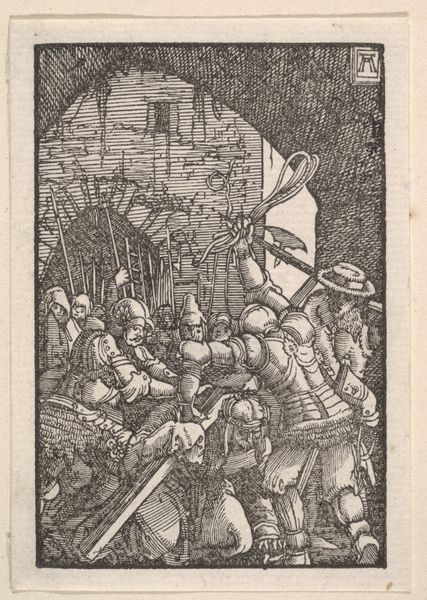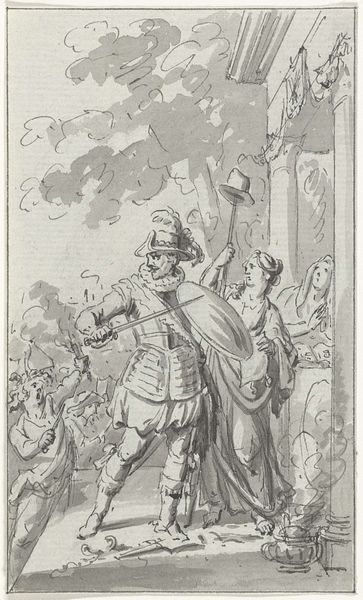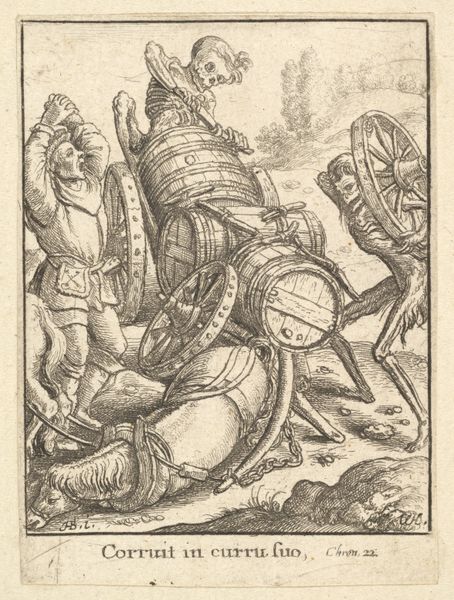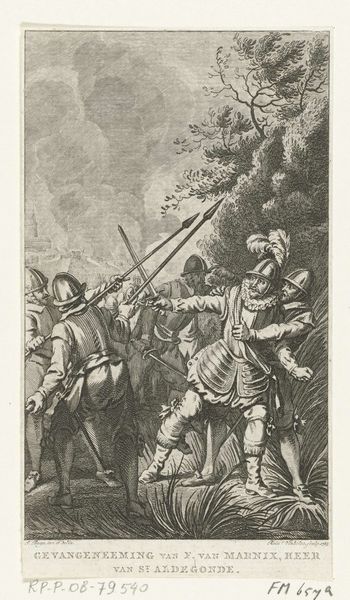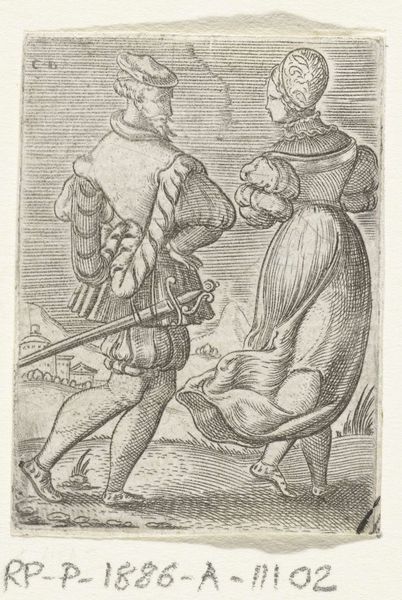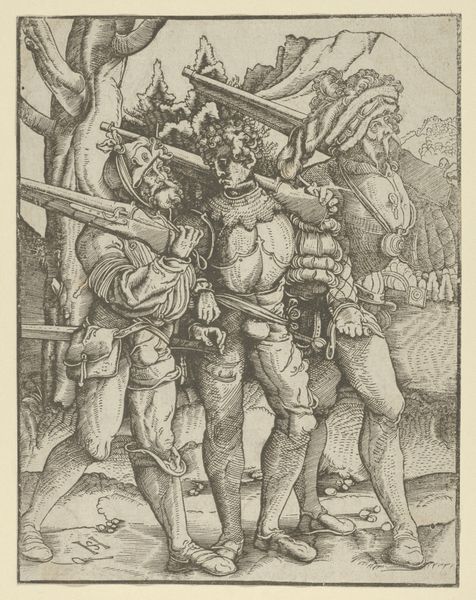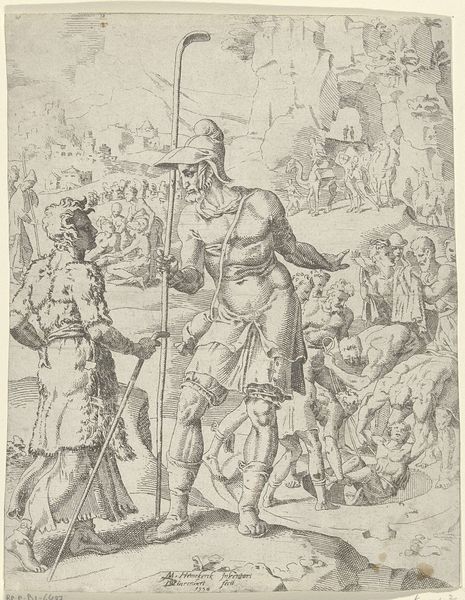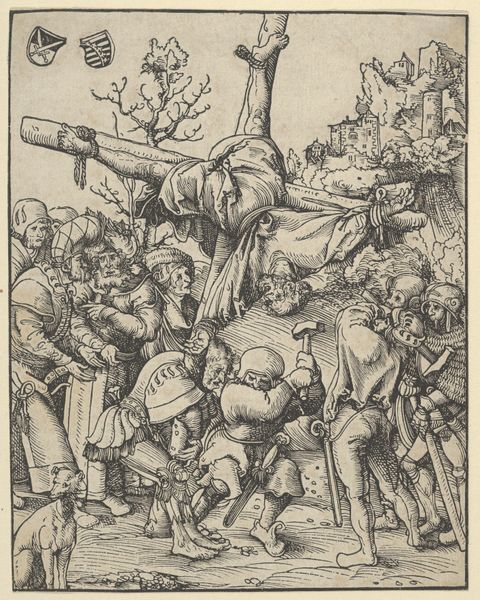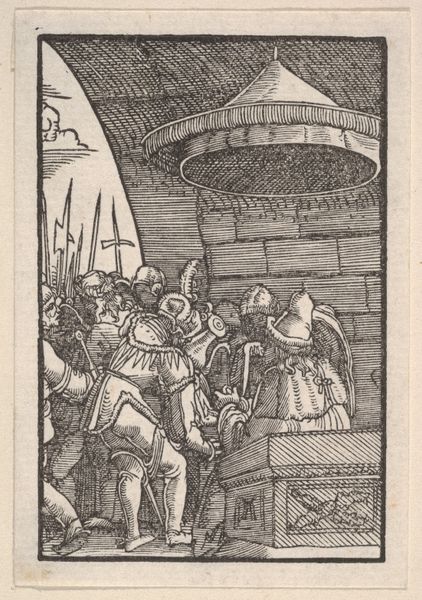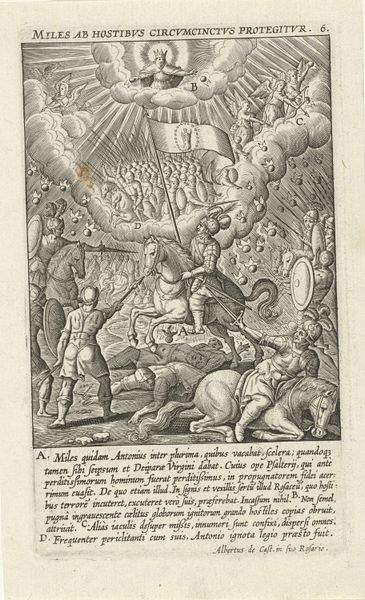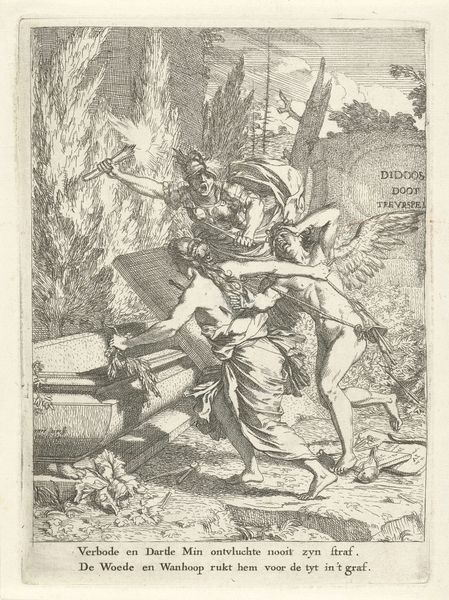
print, engraving
#
toned paper
#
light pencil work
#
narrative-art
#
baroque
# print
#
pen sketch
#
pencil sketch
#
sketch book
#
figuration
#
personal sketchbook
#
pen-ink sketch
#
line
#
sketchbook drawing
#
history-painting
#
sketchbook art
#
engraving
#
pencil art
Dimensions: height 111 mm, width 66 mm
Copyright: Rijks Museum: Open Domain
Editor: This is "David and Goliath," an engraving by Salomon Italia, dating from after 1655. I'm struck by the stark contrast between the small, seemingly vulnerable David and the massive, armored Goliath. How do you interpret the social commentary embedded within this piece, given the historical context? Curator: It's essential to consider the socio-political climate in which Italia was working. Engravings like this circulated widely, shaping public perceptions of power and authority. The choice of depicting David, the underdog, resonated with populations often subject to larger oppressive forces, did it not? How do you think Italia manipulates the visual language of the Baroque era to reinforce this theme of the powerless overcoming the powerful? Editor: Well, the use of line seems really important. The meticulous details of Goliath’s armor versus the simpler lines depicting David contribute to the power dynamic. But it seems a bit simplified to assume Italia was making an overt political statement? Curator: True, religious narratives always navigate complex waters. However, even in religious depictions, power structures are reinforced or challenged. Was Italia subtly commenting on religious authority? How else can one use David to address authority more widely? Who commissioned this, and how did they want this narrative told? Editor: I hadn't considered that perspective so directly. The idea of art as actively shaping public sentiment and either reflecting or questioning established social order…it offers a new lens. Curator: Precisely! Consider then the institutions of the time. The art market was itself a reflection of class and religious conflicts and status. An engraving like this would be acquired and collected for many different reasons depending on what meaning the viewer ascribes. Editor: Thank you. This reminds me how essential historical grounding is to understanding an artwork’s full resonance. Curator: Indeed. By examining how images circulate and are consumed, we can uncover so much about the power dynamics of the past – and present.
Comments
No comments
Be the first to comment and join the conversation on the ultimate creative platform.
